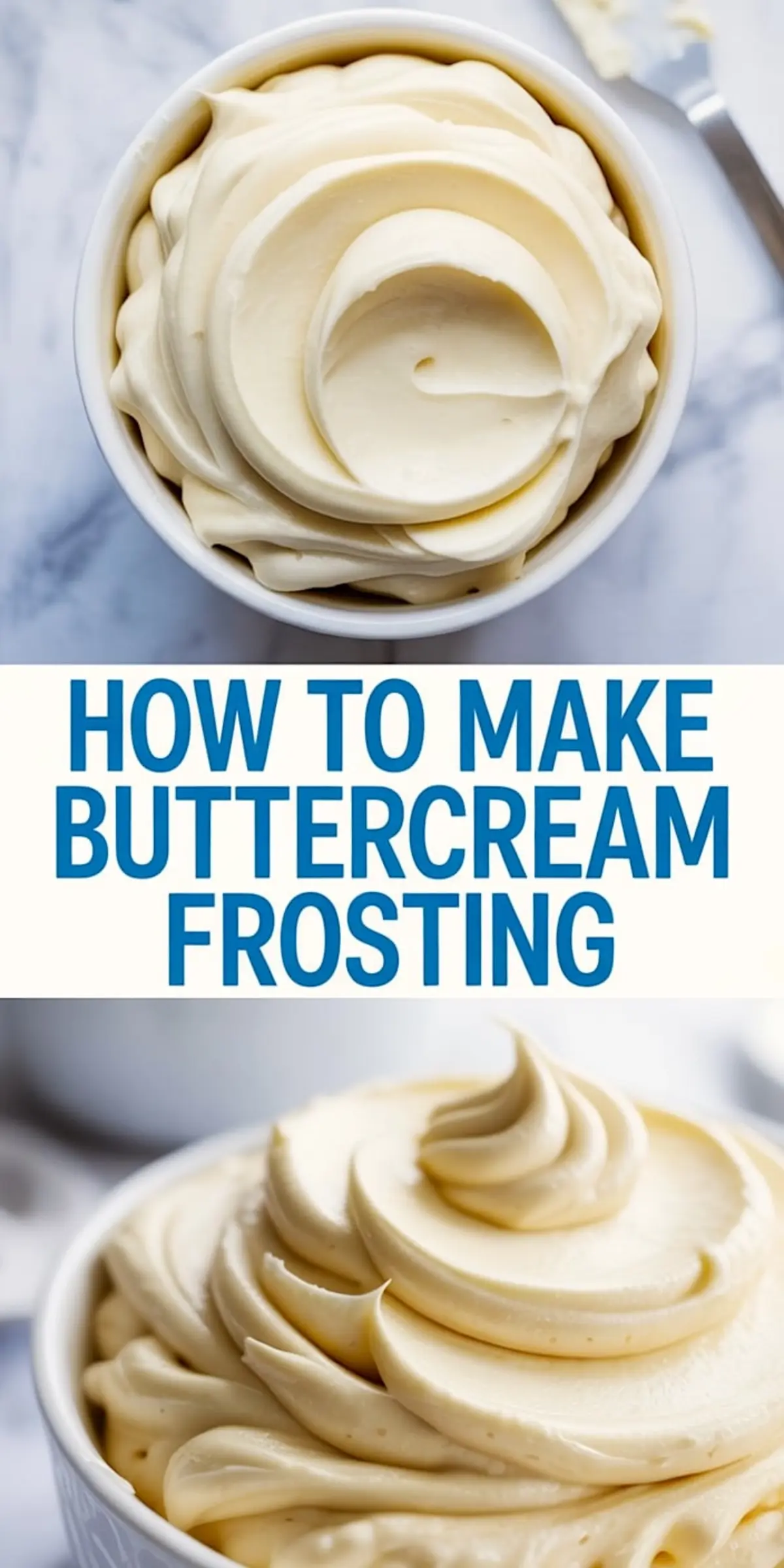A good vanilla buttercream frosting should do more than just taste sweet. It should hold its shape on a warm day. It should spread easily without tearing your cake. It should taste like real vanilla, not like sugar mixed with air.
And it should feel familiar in your hands, predictable, workable, dependable. That’s what you’ll learn here.
This is a buttercream frosting recipe easy enough for beginners, but it performs like the kind used on bakery-style cupcakes. It adapts well to coloring, to piping, or to a thin finish on layer cakes.
If you’ve struggled with frosting that melts, won’t smooth, or just tastes off, this simple buttercream frosting gives you control again. It’s based on my years of teaching cake classes, where home bakers asked one thing over and over, how to make buttercream frosting that doesn’t disappoint.
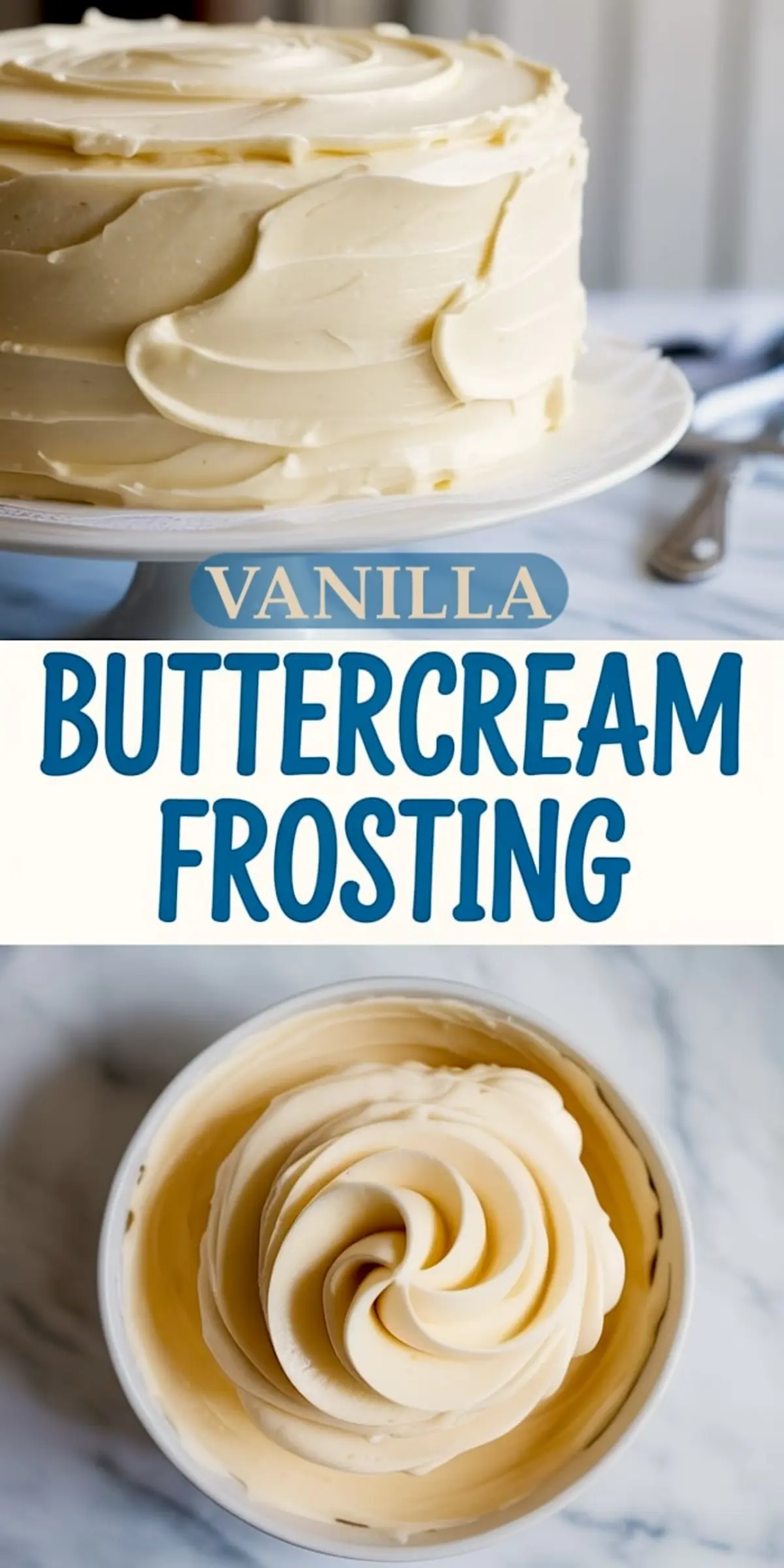
This Vanilla Buttercream Works
The ingredient list is short, but each part matters.

This version uses unsalted butter, beaten longer than most expect, to build air and structure. Powdered sugar is added in stages, which prevents graininess.
A splash of heavy cream smooths everything out while giving it body. And vanilla extract brings warmth without clashing with cake flavors. Many vanilla frosting recipes fall short because they rush through this. I don’t.
You’ll notice this recipe also gives you a choice whole milk or cream. I’ve used both. Whole milk works if you want a lighter, more spreadable texture.
But when I need sharp edges on piped swirls, I always go with cream. It thickens the frosting, builds structure, and makes it easier to control.
A Quick Note on Sugar Ratios

Use 3½ to 4 cups of powdered sugar depending on how firm you need the frosting. For a buttercream frosting cakethat won’t droop, I stick closer to the higher end. But if I’m frosting cupcakes for kids and don’t want them overly sweet, I pull back just a bit.
Powdered sugar isn’t just sweetener it shapes the body.
That’s why I always sift it first. Sifting keeps the texture light and avoids clumps, especially in warmer kitchens where humidity can sneak into your sugar storage.
Let the Butter Tell You When It’s Ready

Start by beating room temperature butter for a full 2 to 3 minutes. The butter should look pale and fluffy before the sugar even touches it. This extra step adds volume and helps the frosting hold air.
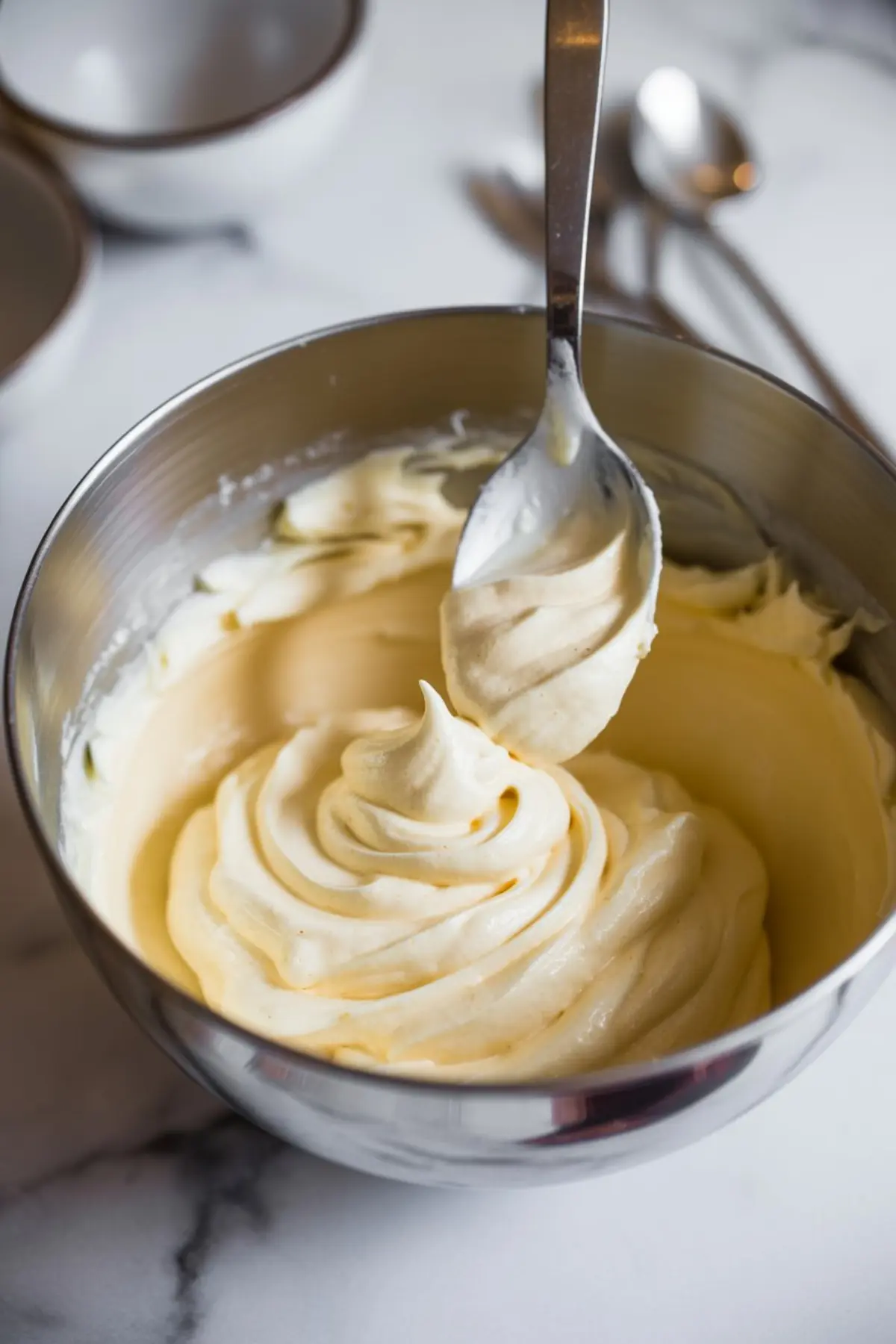
It makes a difference. I’ve tested it both ways. When I skip this step, the final frosting looks flat and dull. When I take my time, it’s glossy and firm.
Want an even smoother result? Try using European-style butter. It has a higher fat content and creates a silkier texture. I use it when making white buttercream frosting for wedding-style cakes or high-end decorating.
How to Finish the Texture Just Right
Once the sugar is in, you’ll beat again, this time longer than most recipes suggest. Keep the speed on medium-high for about 2 minutes, letting the frosting fully come together.
Then comes the cream and vanilla. I usually start with 2 tablespoons of heavy cream. Add more only if the frosting feels stiff. A pinch of salt helps balance the sweetness, even though it seems small. Don’t skip it.
I taste as I go. Some days I use clear vanilla if I need white buttercream frosting for a wedding order. Other times, I’ll use a strong Madagascar vanilla to deepen the flavor. Both have their place.
If you’re decorating Pink Velvet Cupcakes with Vanilla Buttercream Frosting, the subtle golden tone of classic vanilla extract won’t matter. But for a bright white finish, use clear vanilla and European butter.
Here’s that cupcake recipe if you want to match them:
Pink Velvet Cupcakes with Vanilla Buttercream Frosting
How to Use and Store This Frosting

This frosting works best fresh. I like to make it the day I frost the cake or cupcakes. But it stores well too. You can keep it covered at room temperature for one day, or refrigerate it for up to a week.
If chilled, let it come back to room temperature, then re-whip it for a minute or two. That brings the texture back to life.
I’ve used this same homemade vanilla frosting on everything from Simple Moist Vanilla Cake to layered birthday cakes and cupcakes for school sales. It always comes through.
Here’s that moist vanilla cake base:
Simple Moist Vanilla Cake Recipe
A Helpful Comparison: Milk vs Cream

You might wonder if the cream really makes a difference. It does.
In my testing, whole milk creates a softer, more fluid consistency. Great for spreading on sheet cakes or crumb coats. But for piped borders, roses, or writing, heavy cream adds stability and shape.
If you’re going for easy buttercream frosting that performs well with minimal skill, choose cream. It gives you a margin of error.
It holds better, especially in warm rooms.
Related Recipes to Try with This Buttercream
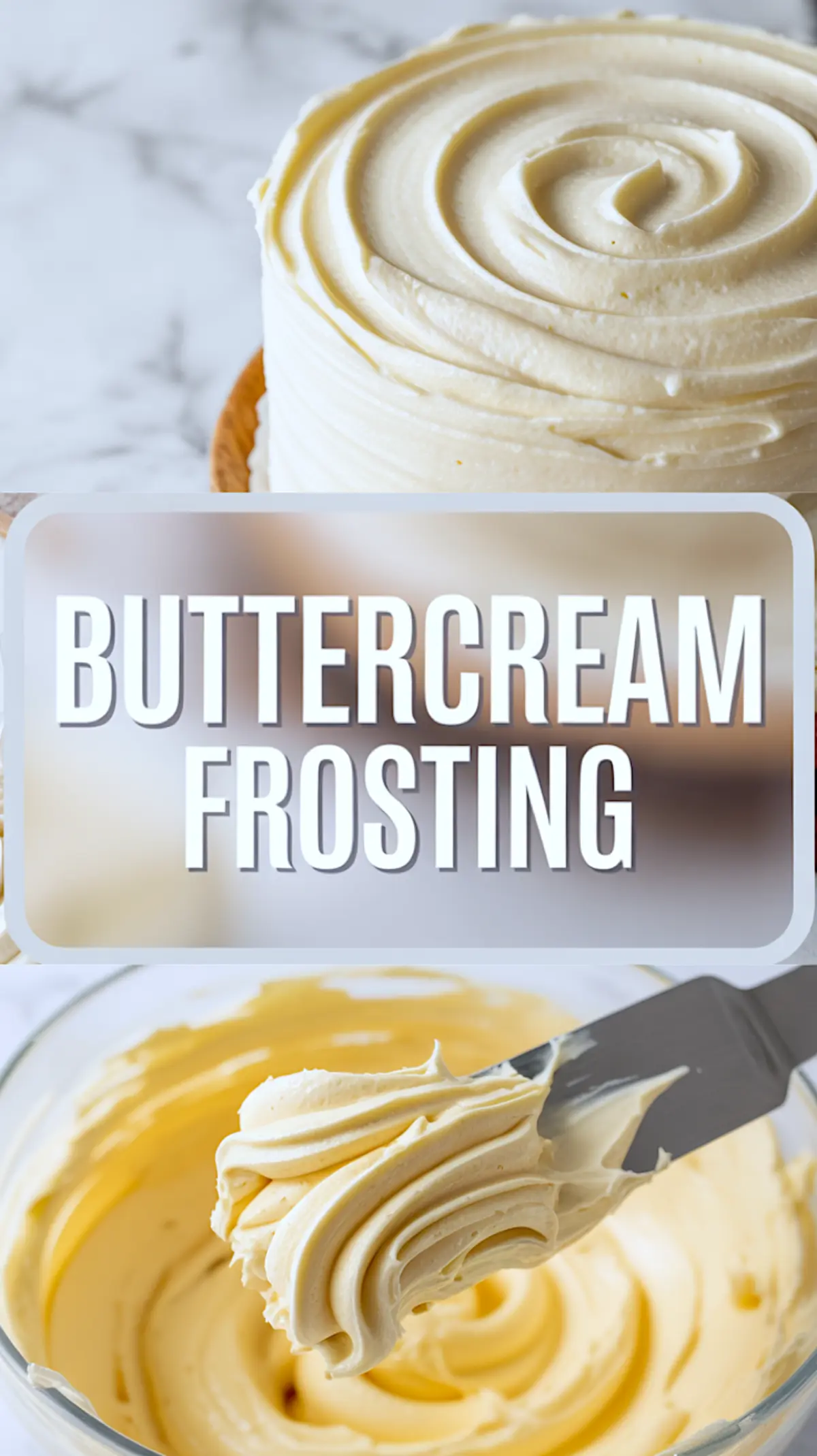
If you want to experiment with flavored frostings next, start here:
This one’s great for chocolate cake layers or even sandwiching cookies.
Or try this quick rich option:
Chocolate Frosting in 10 Minutes
It uses the same butter-sugar base, with cocoa powder added directly.
Each follows the same structure, so once you learn one, the rest fall into place.
Final Thoughts and Helpful Takeaways
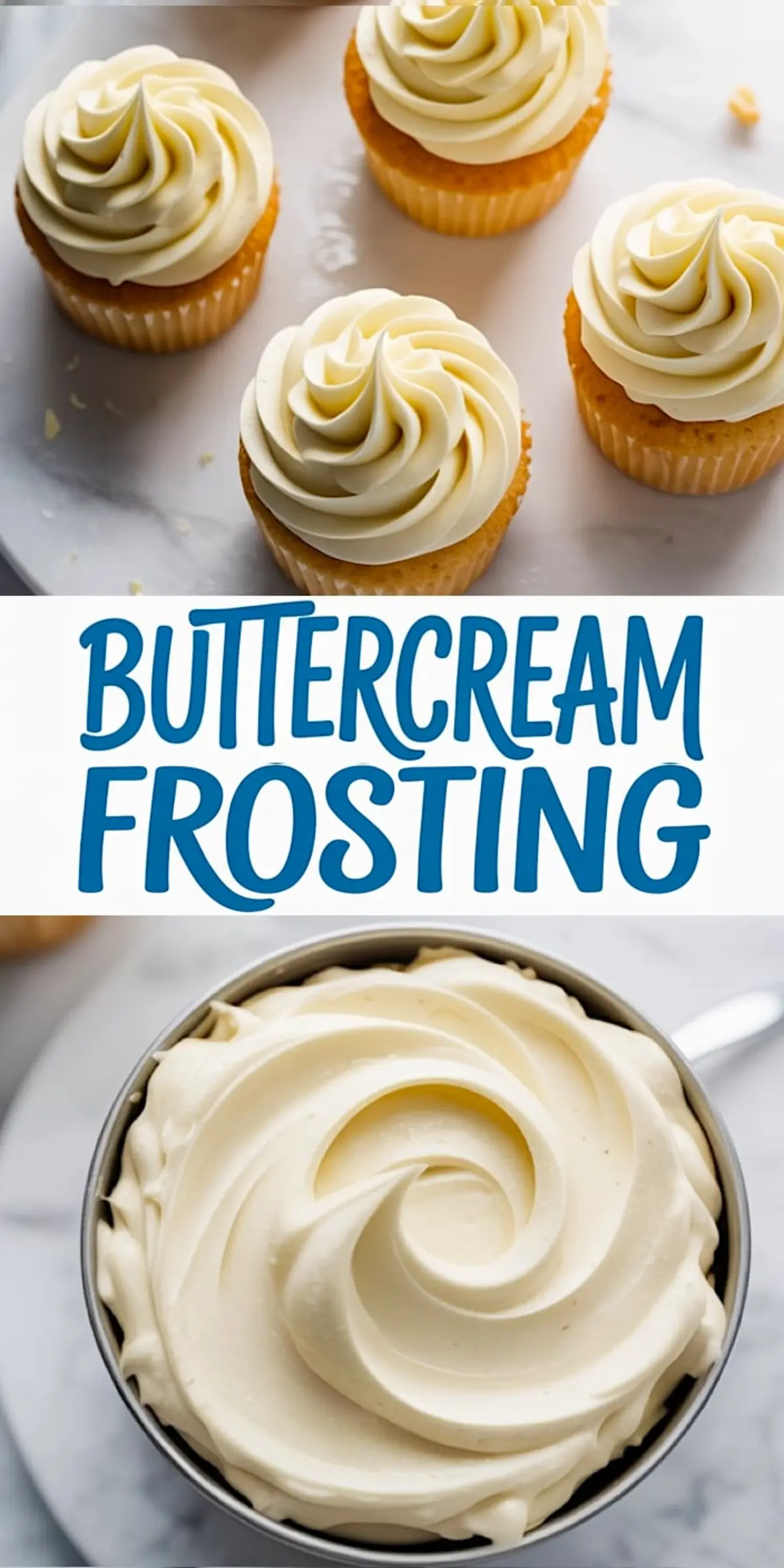
This is a foundational buttercream.
It lets your flavor choices shine, from bright citrus to deep chocolate. It pipes clean, spreads smooth, and stays where you want it to.
The more you use this best buttercream frosting recipe, the more it becomes second nature. I keep it in my notes, always close, always trusted.
Save this pin to your frosting or cake board so it’s ready next time.
If you bake with it, share how it worked out in the comments. Or ask your questions—I’m happy to help troubleshoot or suggest tweaks based on your climate, tools, or cake style.
Let’s keep the conversation going.
Vanilla Buttercream Frosting Recipe
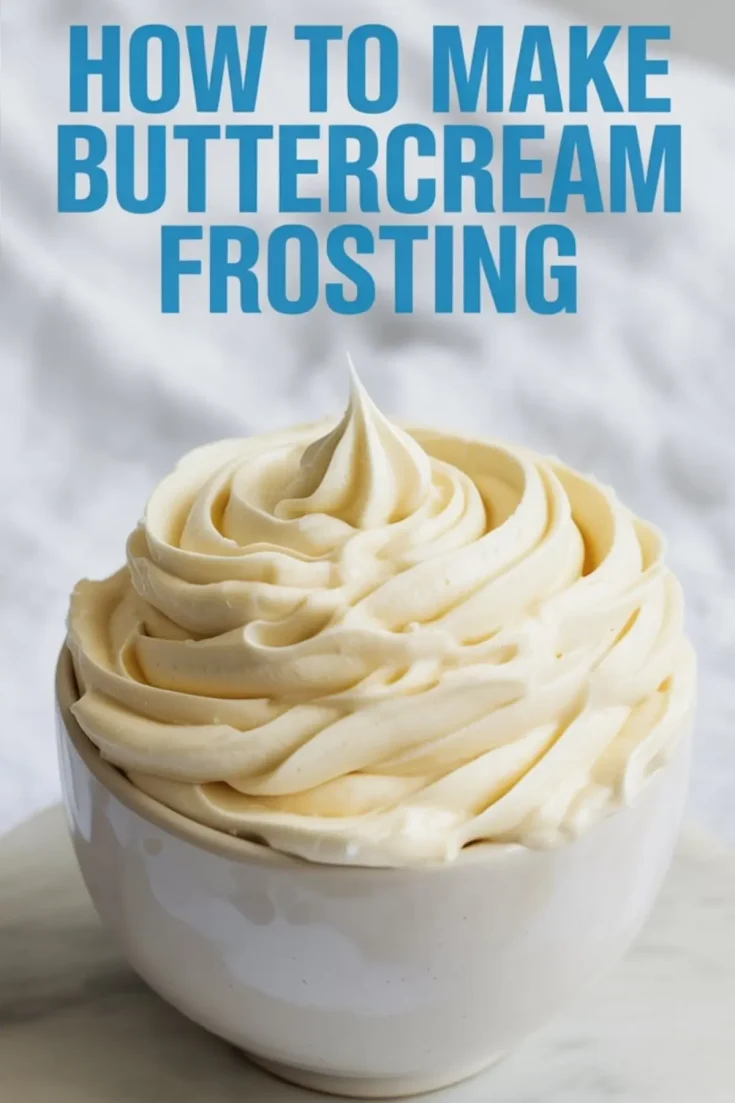
Buttercream frosting is sweet, smooth, and easy to pipe or spread. This recipe creates a fluffy, stable frosting with a balanced vanilla flavor. It's ideal for decorating cakes and cupcakes and adapts well to color or flavor variations.
Ingredients
- 1 cup (226g) unsalted butter, softened to room temperature
- 3 ½ to 4 cups (420g to 480g) powdered sugar, sifted
- 2–3 tablespoons heavy cream or whole milk
- 2 teaspoons pure vanilla extract
- Pinch of salt
Instructions
- BEAT THE BUTTER: In a stand mixer fitted with a paddle attachment, or using a hand mixer, beat the softened butter on medium speed for 2–3 minutes until it becomes light, creamy, and pale in color.
- ADD POWDERED SUGAR GRADUALLY: Reduce the mixer speed to low and add the sifted powdered sugar 1 cup at a time. After each addition, beat until mostly incorporated before adding more. Once all the sugar is added, increase the speed to medium-high and beat for another 2–3 minutes until well combined.
- ADD VANILLA, CREAM, AND SALT: Pour in the vanilla extract, 2 tablespoons of cream, and a pinch of salt. Beat on medium-high speed for about 2 minutes until the frosting is smooth and fluffy. Adjust the consistency as needed—add 1 more tablespoon of cream if the frosting is too thick, or ¼ cup additional powdered sugar if it is too soft.
- CHECK CONSISTENCY: Scrape down the sides of the bowl and assess the texture. Use a slightly thicker consistency for piping and a looser one for spreading on cakes.
Notes
Store frosting in an airtight container at room temperature for up to 1 day, or refrigerate for up to 1 week. Bring to room temperature and rewhip before using if chilled.
Nutrition Information
Yield
1Serving Size
1Amount Per Serving Calories 1507Total Fat 143gSaturated Fat 91gTrans Fat 5gUnsaturated Fat 42gCholesterol 443mgSodium 422mgCarbohydrates 39gFiber 0gSugar 40gProtein 18g
